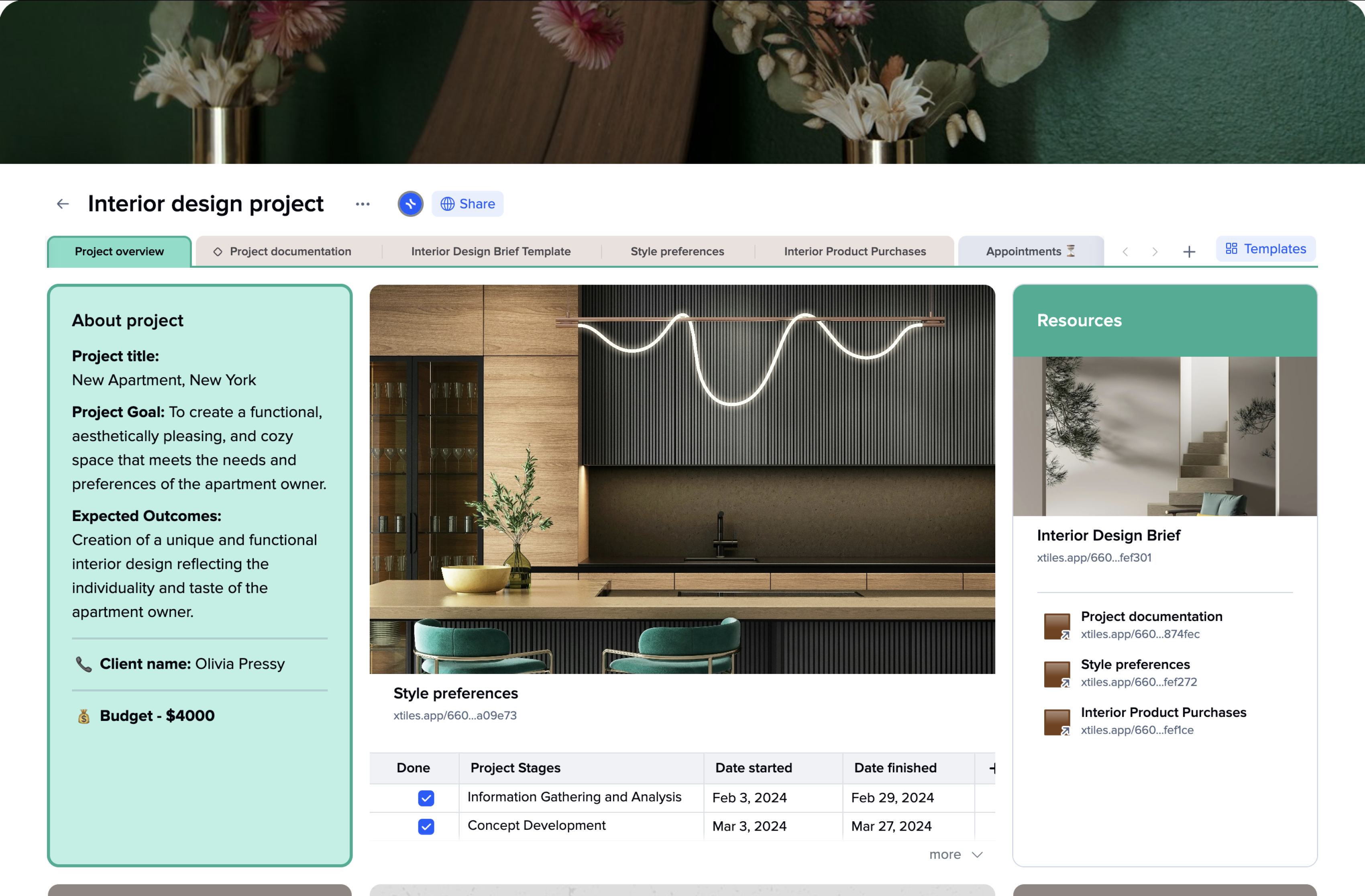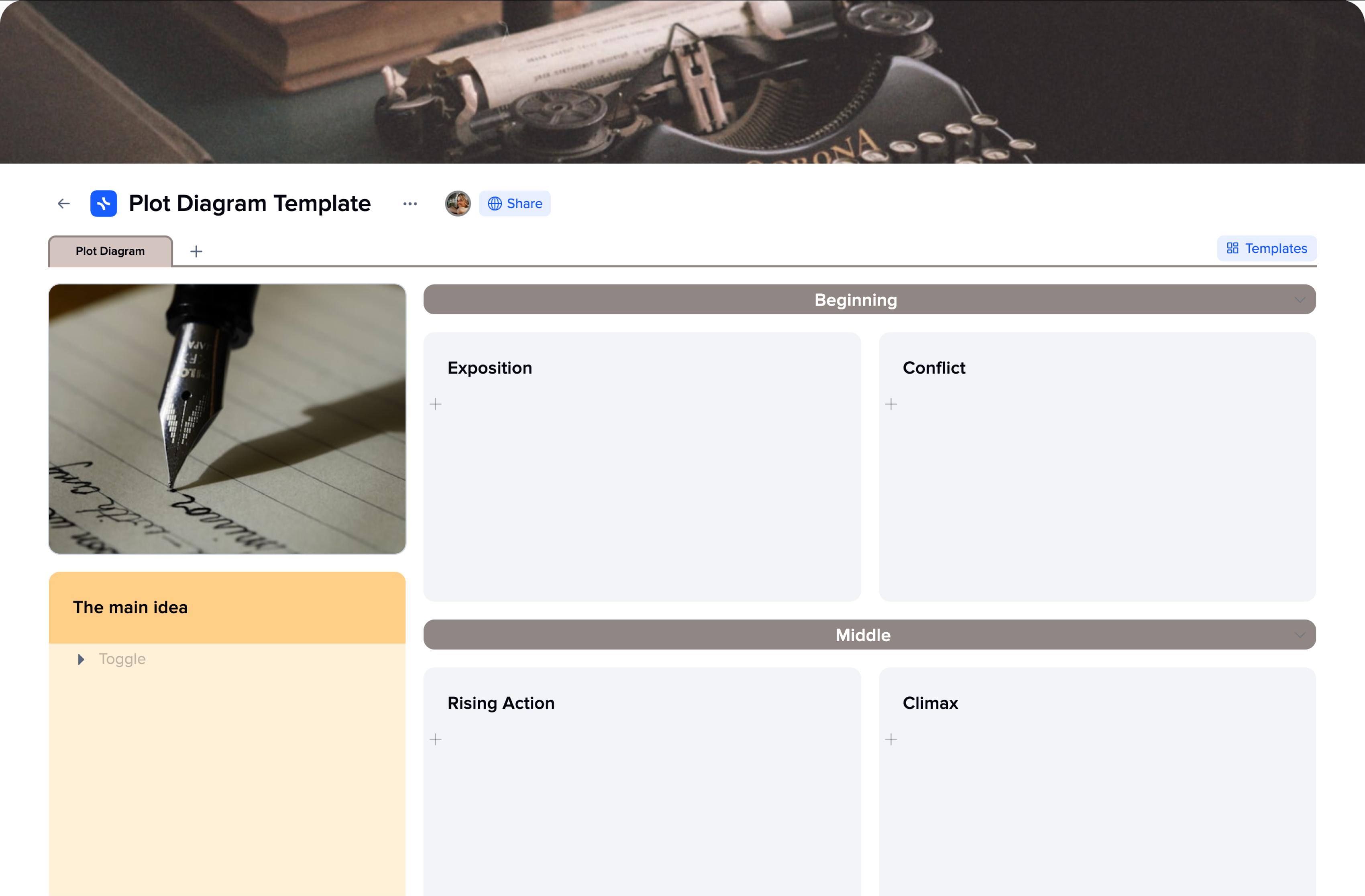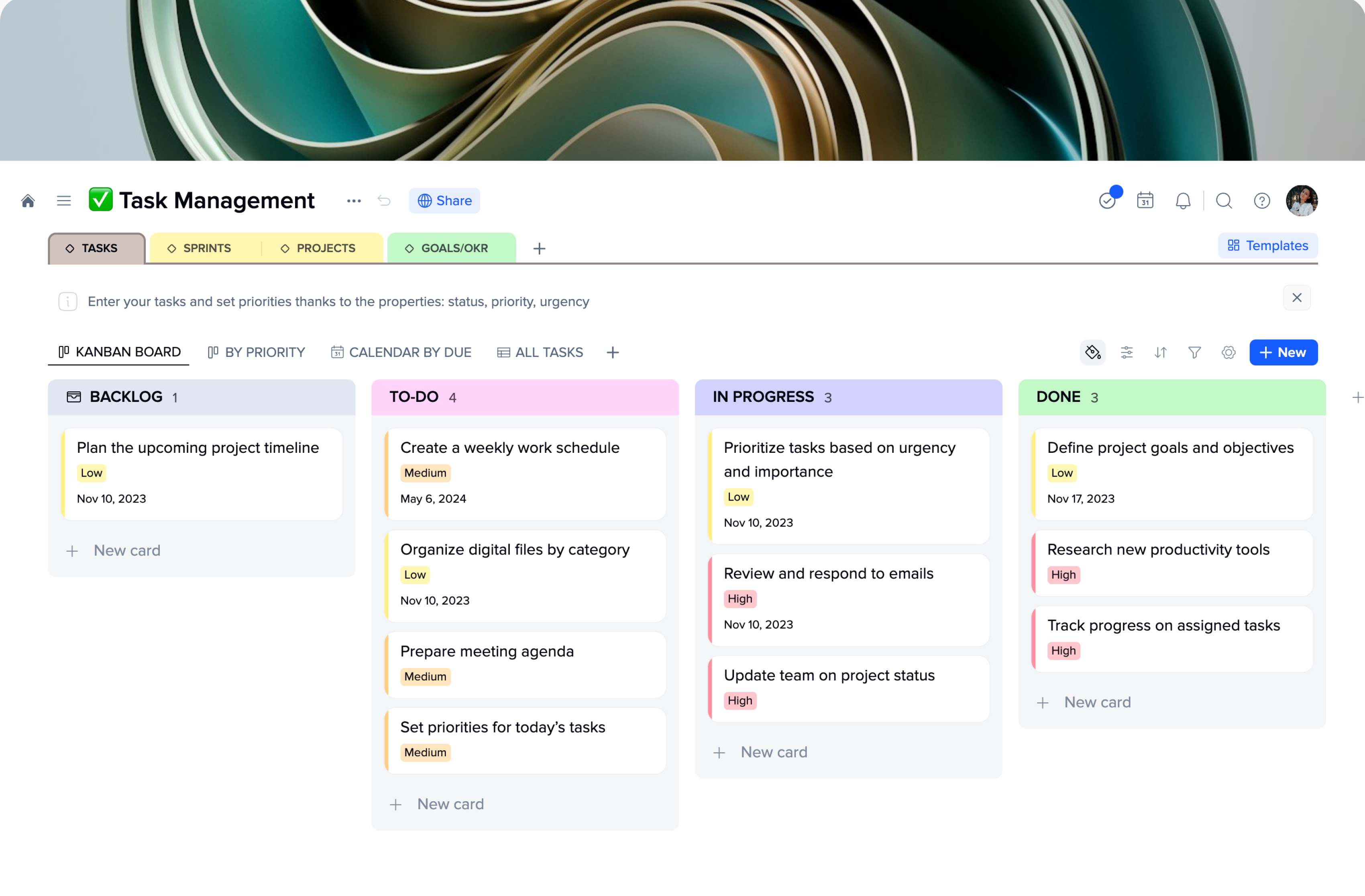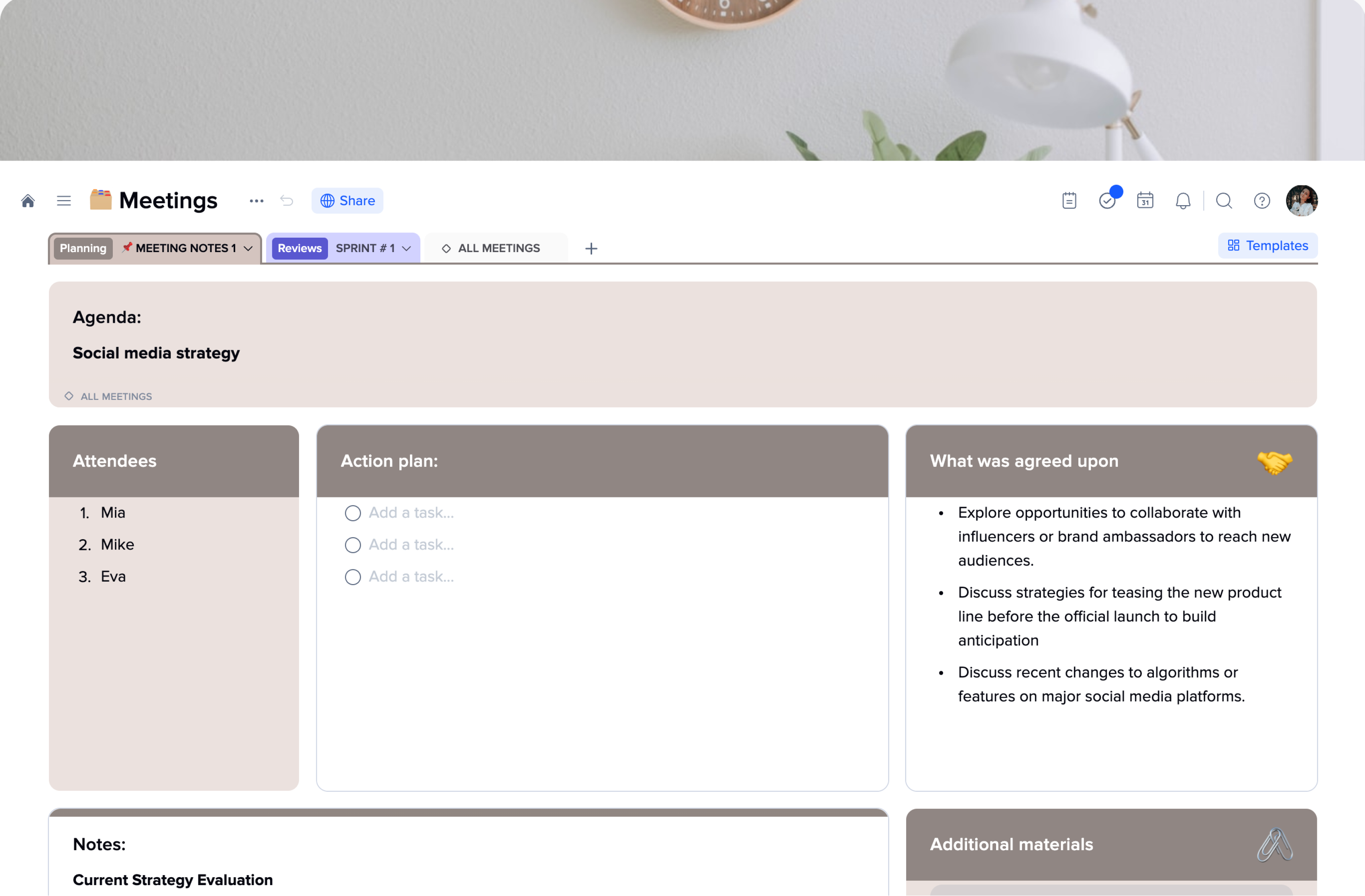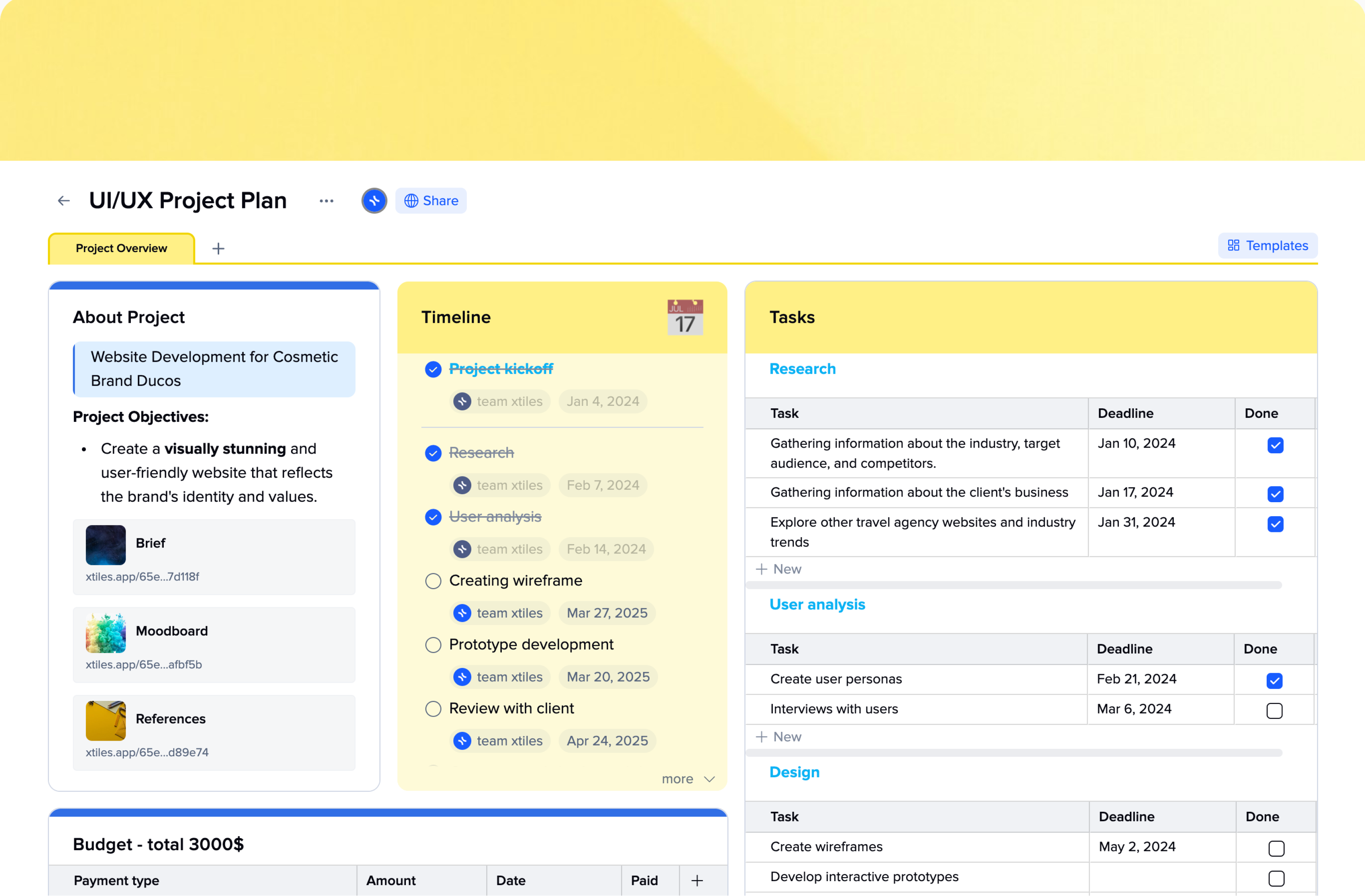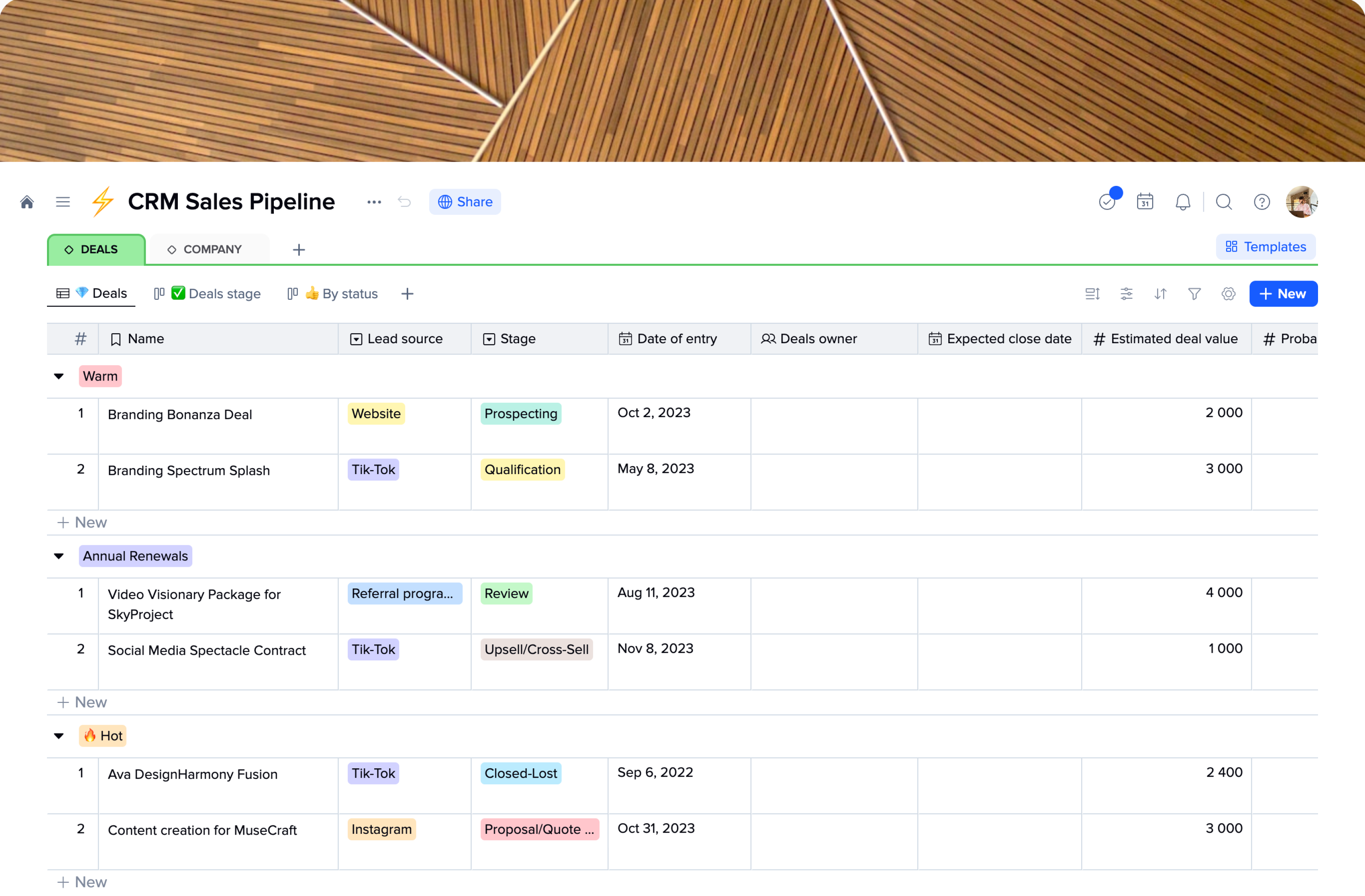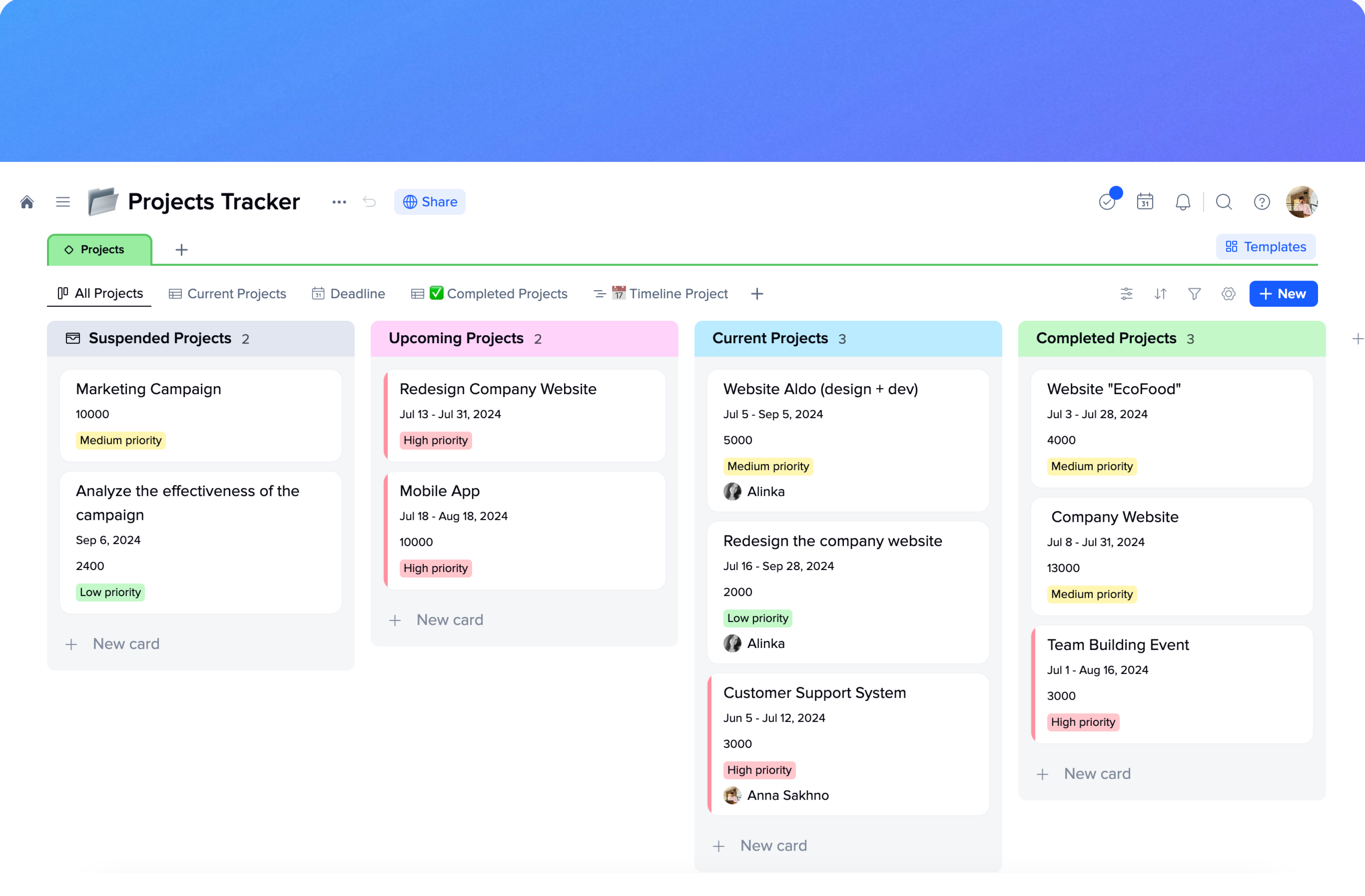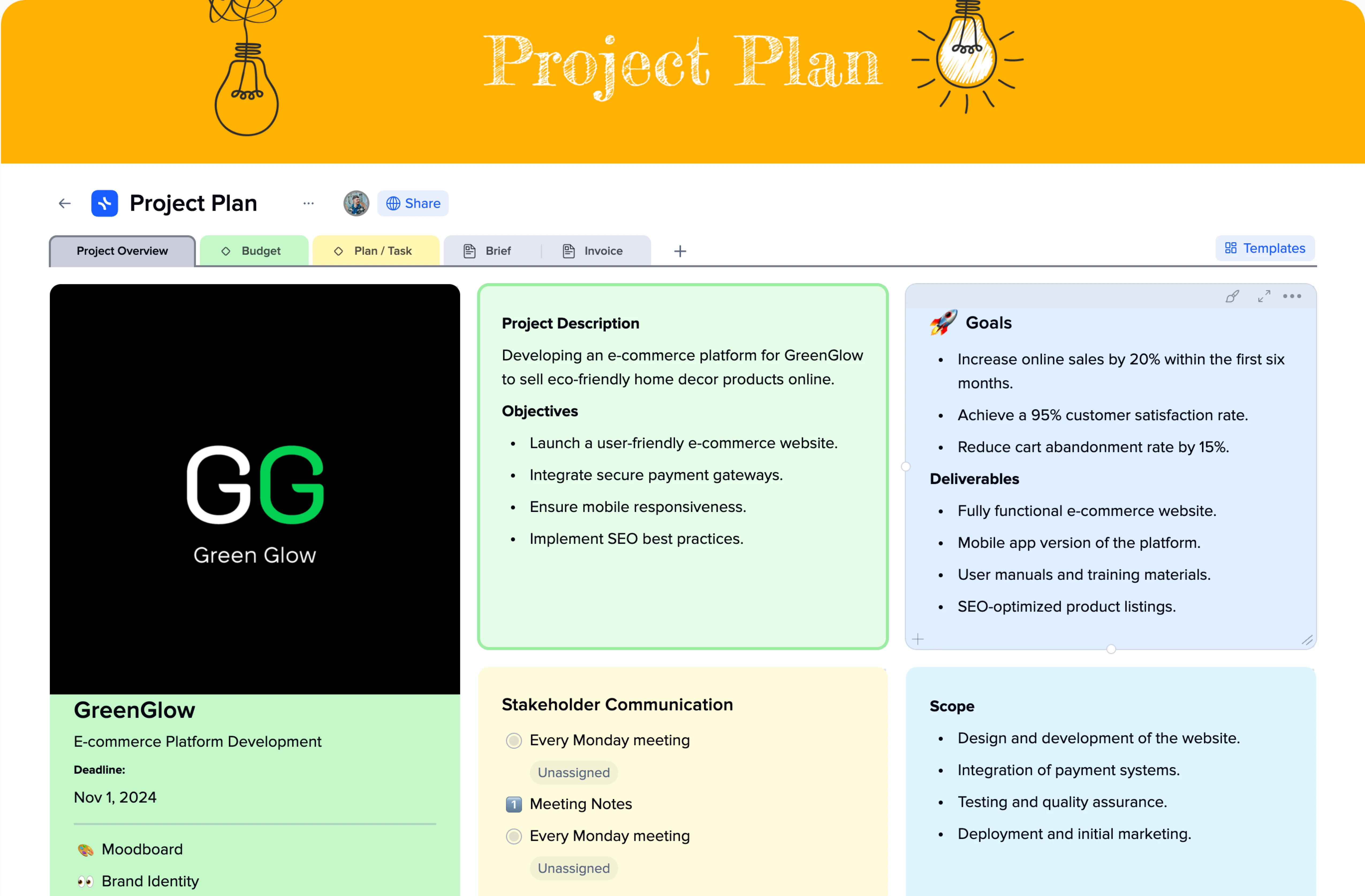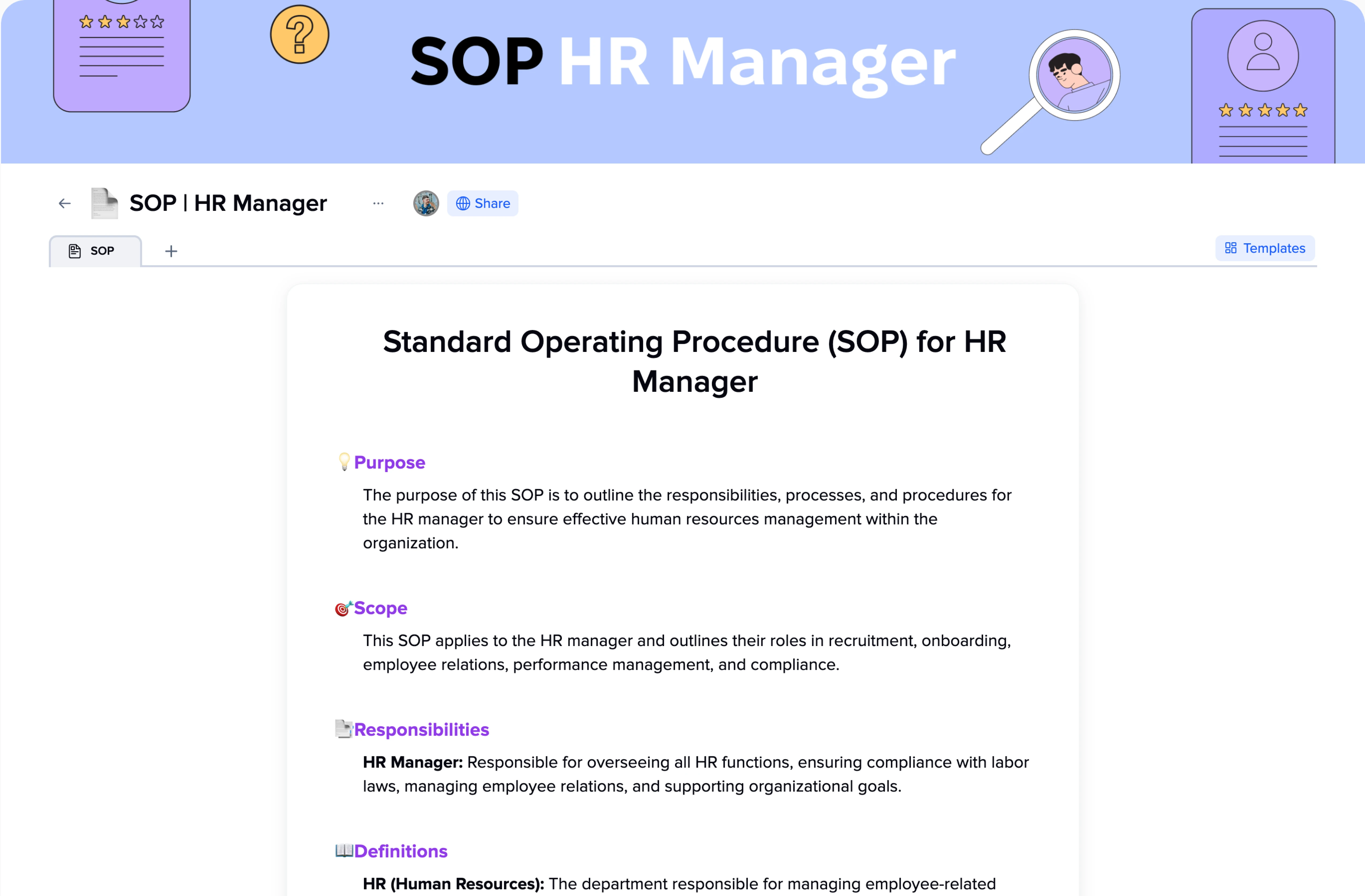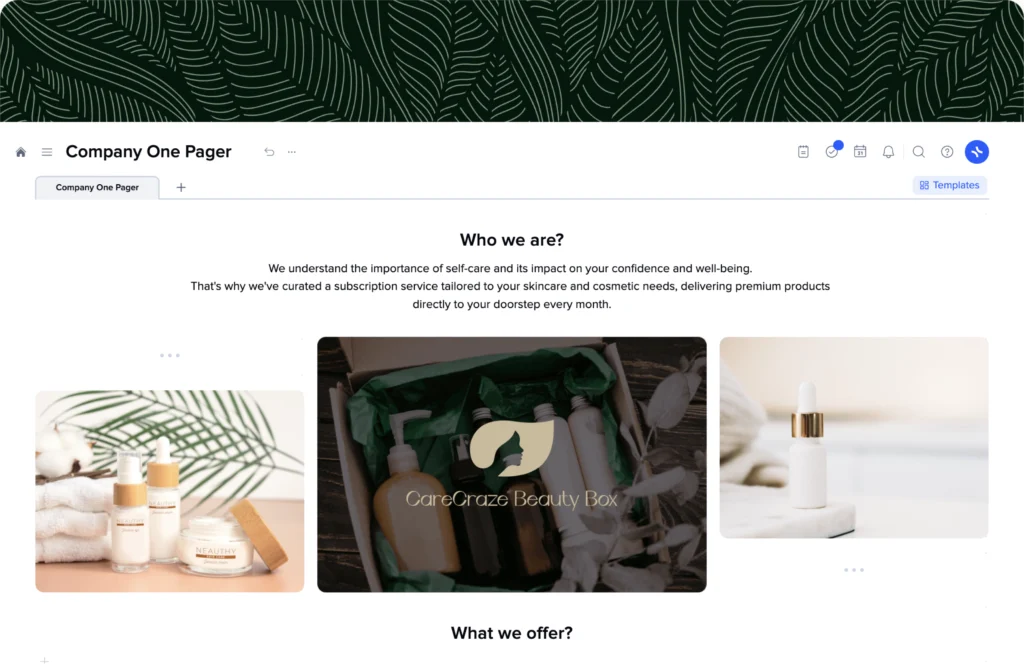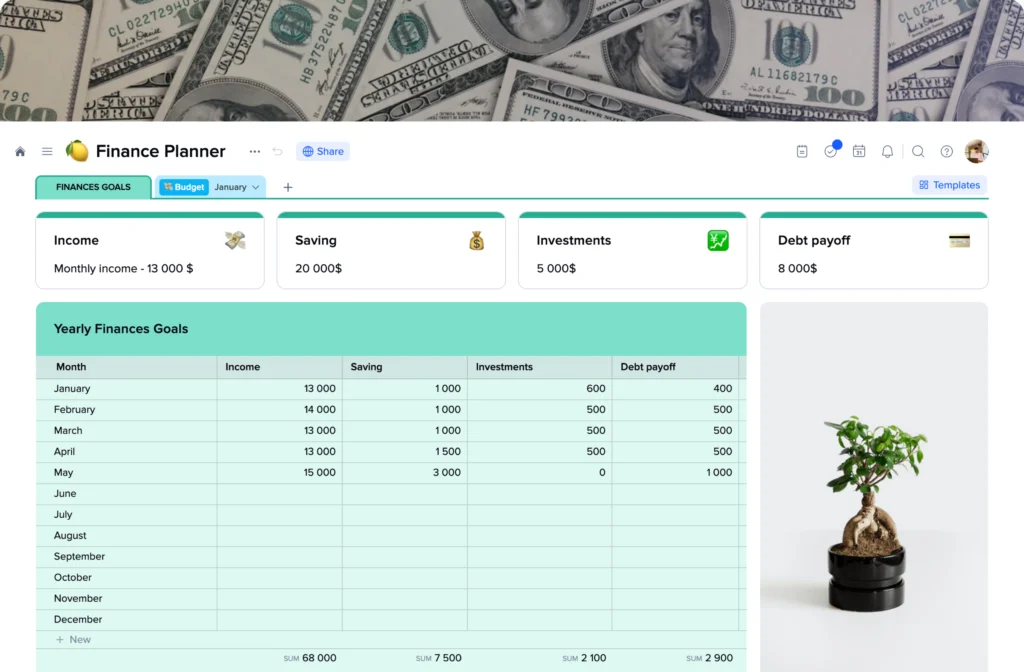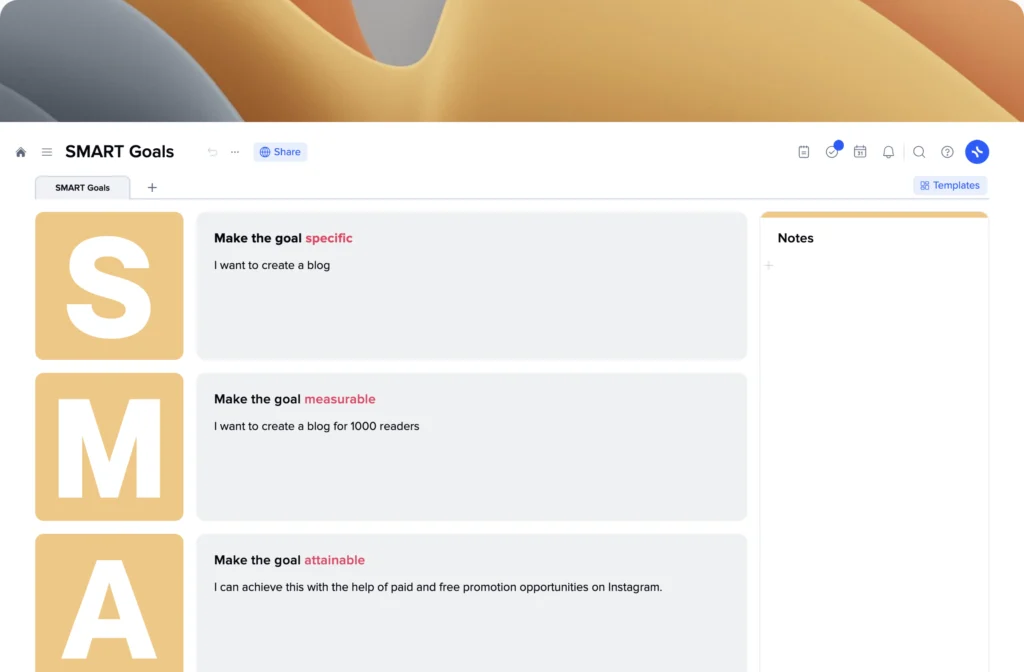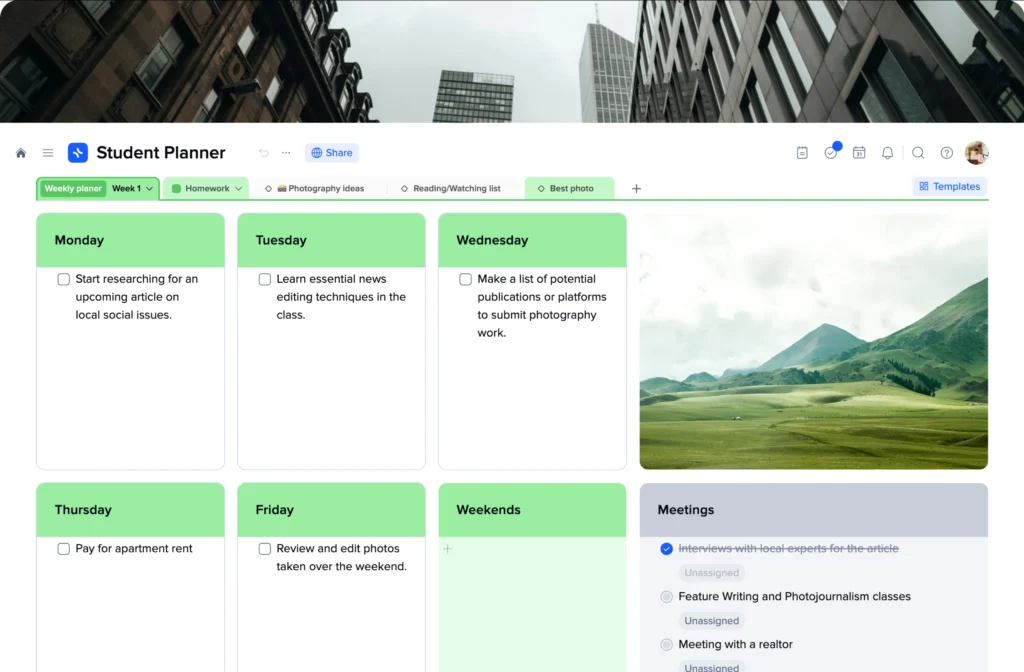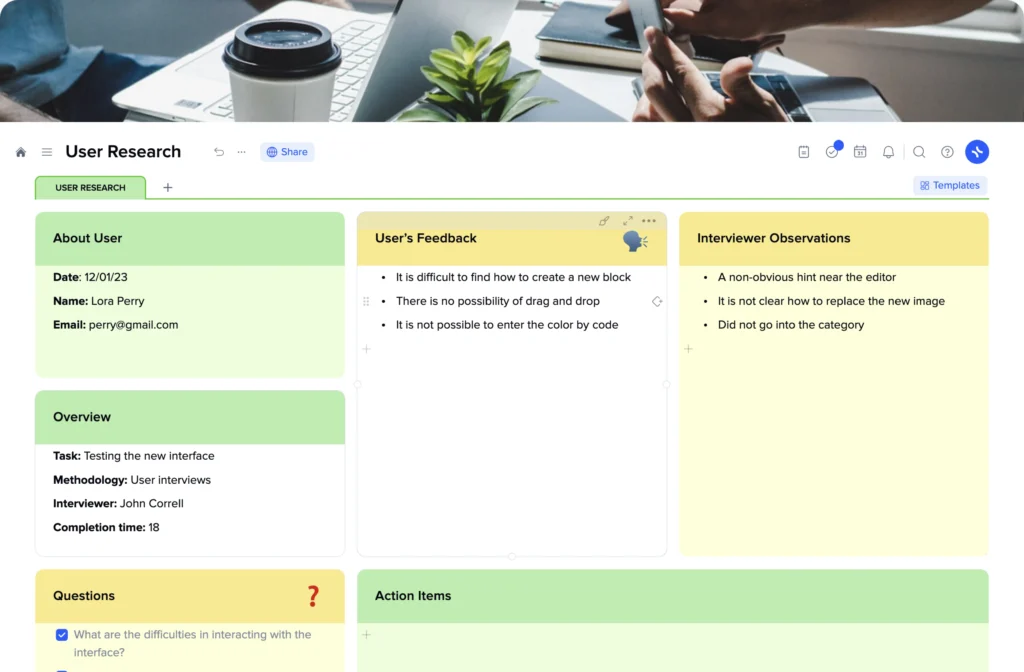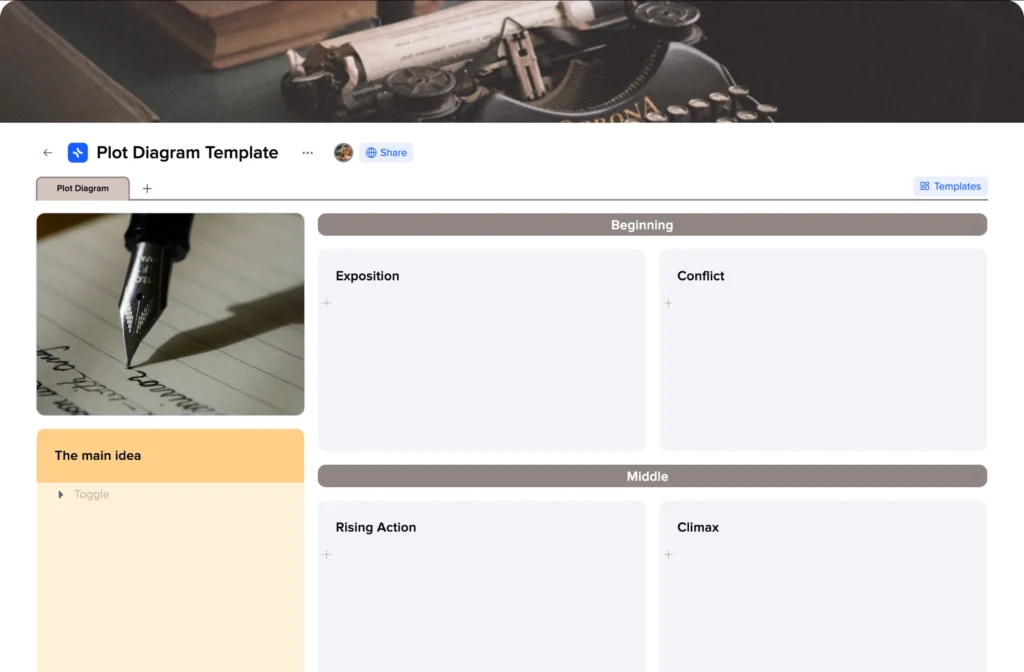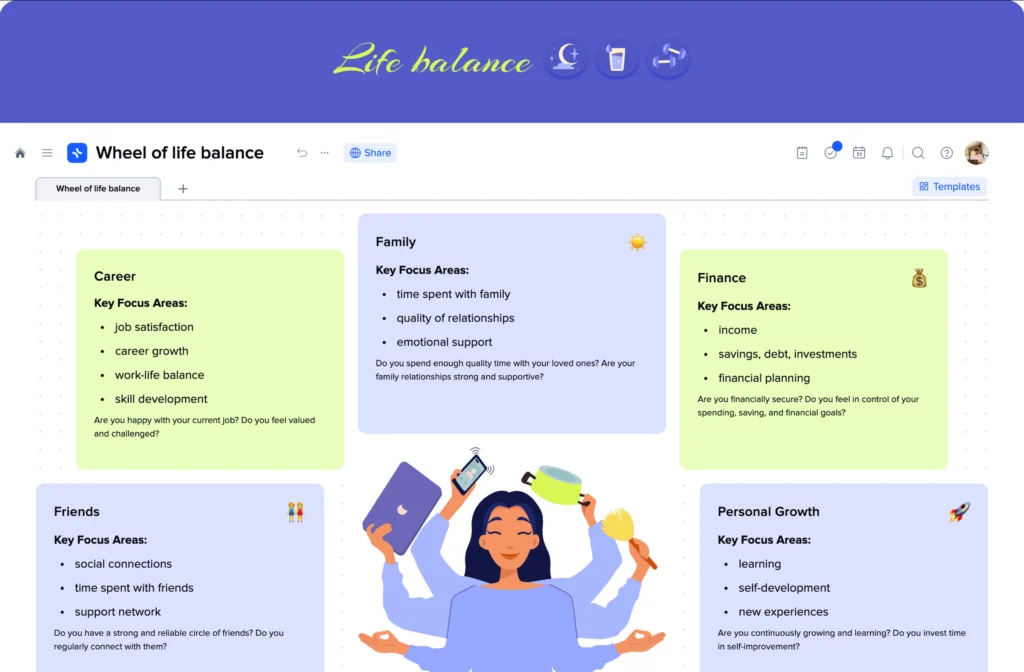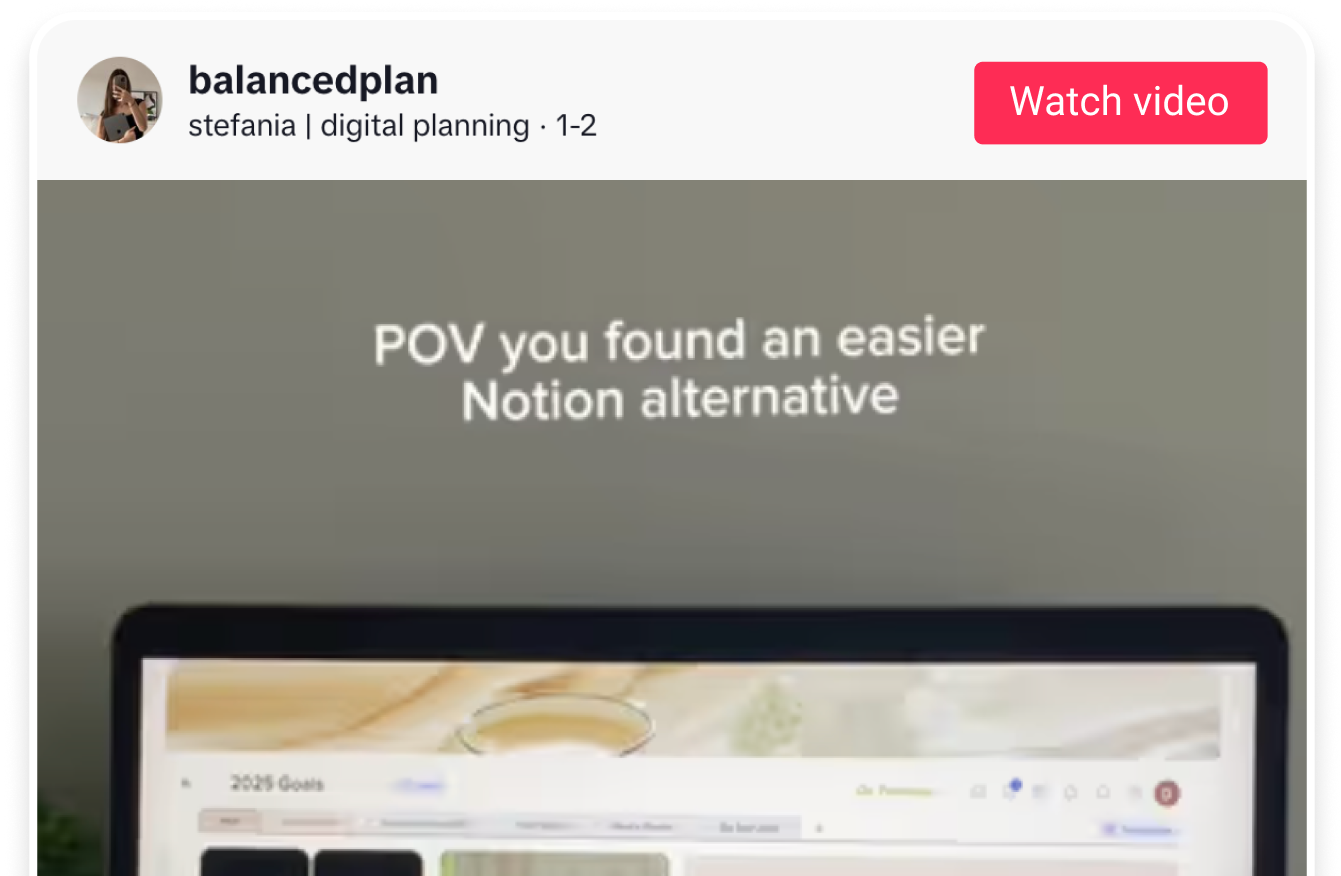How to create an effective interior design project plan using the xTiles Interior Design Project Template?
Project managers follow a methodical and replicable approach to steer projects from their inception to successful completion. In the context of interior design, this structured process is referred to as the interior design project cycle.
While the specifics of the interior design project cycle might differ from one company or project manager to another, they all share common stages, objectives, and outcomes.
The interior design project cycle comprises a few distinct stages:
- Write a project overview
- Survey the space you’re going to renovate
- Develop your concept and ideas for the project
- Get all the needed stuff for your design
- Design development and implementation
- Finish your project
- Audit the outcome
1. Write a project overview
Writing a client brief revolves around understanding your client’s preferences, needs, what they dislike (this is important too so that you have a more defined guide on what is preferable and what to omit in your designs), and desired outcomes for their project.
Interior design is always deeply personal. That’s why sometimes it might be hard to get all the information from your clients. However, gaining insight into your client’s motivations is crucial for making informed design choices. Being an interior designer is always about being a bit of a psychologist.
During this initial phase, it’s essential to ask your client relevant and thoughtful questions to explore their vision for the finished space—understanding how they imagine the look and ambiance they want to achieve. You need to establish a connection with your client. Sometimes, it’s wiser to refuse the project if it doesn’t feel like something you can deliver.
The project overview serves as a catalyst for sparking your creativity and contemplating how you can transform your client’s aspirations into a tangible concept. Also, there are always quick answers whenever you’re in doubt.
However, it’s important to keep in mind that the ideas discussed during the initial client brief are not set in stone. They only provide a general understanding of your client’s preferences. The real refinement of these ideas takes place during the concept development stage.
The initial page of your project should contain a bit of everything regarding your project. Mention people responsible for different processes, a quick overview of your budget, the project’s timelines, and all the contact information you may need during the project.
Also, it may be helpful to gather links to the client’s preferred design styles and solutions, references, mood or design board, etc. If you share your interior design project management plan with your clients, there’s a big chance that they won’t go further than the first page, so it better be comprehensive.
2. Survey the space you’re going to renovate
A site survey involves analyzing your client’s existing space to gather essential information for the interior design project.
As a rule, this stage is typically conducted during the initial client briefing. However, there are instances when they may be deferred or when you may need to do it again. Or when you have to do it later because when you write a brief, the building is still under construction.
There are a few important steps to keep in mind when doing your field survey:
- Thoroughly explore every nook and cranny of the space, making note of any spontaneous thoughts or ideas that come to mind. They will be a valuable resource for later brainstorming, mentally taking you to visit the spare you’re renovating.
- Capture numerous photographs of the space to have a comprehensive visual reference. Additionally, to the photos, you may take a video to better understand how the site looks, how the light works in this certain space, etc.
- Take precise measurements of all relevant dimensions since they will be crucial for the design process. It may happen that there are measurements made by constructors or the owner. However, it’s better to do everything on your own to minimize the risk of mistakes.
- Request a copy of the as-built drawings if available, as they may reveal unexpected details or features.
3. Develop your concept and ideas for the project
Now that you have precise measurements, detailed notes, and a clear understanding of your client’s objectives, you can now refine your and your client’s raw ideas into something well-defined that has the potential to become an outstanding site.
During the concept development phase, draw inspiration from various sources, such as previous projects and interior design concepts, on platforms like Pinterest, Instagram, or Houzz. Generally speaking, any resource where you can get inspiration and new ideas is suitable. Every tool to supercharge your creativity is a good tool.
Remember, concept development is not just about getting a pile of photos of ideas you would like to implement in the space you’re renovating. It’s about compiling those ideas and design solutions and organically integrating them into the site you’re working on so that they align with your client’s specific needs, including features, finishes, furniture, colors, and overall tone/mood of the place they would like to see.
Discovering ideas worth pursuing can be a challenging process. Yet compiling them without turning them into a mess is an even bigger challenge. Techniques like creating a mood board or design board can be immensely helpful in narrowing down the styles, themes, and standout features that resonate with the project.
You may make a different document if you don’t like people checking your design board while you’re still working on them, using the xTiles Mood Board Template. Or you may have everything regarding your project gathered in one place using the xTiles Interior Design Project Template.
xTiles documents offer you easy drag-and-drop and wide customization options so that you can combine the elements whatever you want and as long as you need.
Once you have a few well-developed concepts, start fleshing out your scope of work and consider putting together interior design tasks to formalize the project’s direction and ensure a clear understanding between you and your client.
4. Get all the needed stuff for your design
Now comes the time to source and acquire materials, furnishings, equipment, and all other essential resources for the project. This stage often causes stress because it may be hard to find the exact piece of furniture or decor that you had in your mind when planning the interior. That’s why it’s important to choose items while checking their availability.
Sometimes, the whole project stops because you can’t find the needed paint for the walls. A well-executed procurement process ensures seamless progress, avoiding delays caused by unavailable or low-quality items.
The procurement stage is inseparable from the budget. Effective budget control and management ensures you deliver the outcome that your client is going to like within the budget you discussed earlier.
Talk with your client to find out if it will be okay to purchase second-hand items for decorating their building. That’s a great way to create a vintage vibe and save some money that can be used on items that require to be of high quality.
5. Design development and implementation
Once you present your preliminary design, discuss it with your client (sometimes you need to explain your ideas so that it’s better to prepare notes and remarks about your design ideas before the discussion), and get their approval, you can start the development stage.
You will need not only to find the needed items to make your design come true but also to ensure they work exactly as you intended them to. In the design development phase, meticulous attention is given to refining details and completing all aspects of the design, such as finishes, furniture, fabrics, colors, lighting, decor, millwork, appliances, and other stuff defined by the specifications of the room (bedroom, kitchen, bathroom, etc.).
Be prepared for several revisions during this stage as your client strives to strike a balance between cost and quality. For instance, they may opt for more expensive furniture and inquire if choosing more budget-friendly light fixtures could compensate for the increased cost.
At this stage, you need to work with your client or get their consent to do whatever you think is right. There may be many meetings with your client to discuss this or that detail in practice. Besides your client, you will have many meetings with the team who works on the renovation process. That’s why it’s important to keep track of every appointment you may have regarding the project. The separate page on your xTiles Interior Design Project devoted to appointment scheduling will help you be on time and prepare for meetings.
6. Finish your project
The project closure stage marks the finalization and completion of the project. That’s where you add the last touches to make the design eloquent. That’s where you tie up all the loose ends, encompass financial touches, inspect the results, and present the outcome to your client. Additionally, project closure involves recording and finalizing all contractual obligations, financial transactions, and legal aspects associated with the project.
Even though this is the final push, the stage sometimes takes much longer than you would expect and requires all of your attention in order to resolve all the issues, even the smallest ones that seem to have no power over the finished results.
Needless to say that every phase is important and needed, yet this one holds the utmost significance in ensuring the project’s successful conclusion and client satisfaction. Seeking client approvals is vital to confirm their contentment with the finished project.
Proper documentation and knowledge transfer are the last step of this phase. Taking care of all necessary project information, including warranties, maintenance manuals, and final billing, serves as a valuable reference for the client, enabling them to manage future maintenance, repairs, or modifications of their building effectively.
7. Audit the outcome
Once your project is finished and your client is enjoying their renovated space, it’s time to reflect and learn from the experiences you’ve just gained while it’s still fresh, and you can remember many issues you faced and resolved during this project. Conduct a thorough review of the project, analyzing every aspect using your interior design plan. Additionally, you may take notes during the project about every stage of the project to have resources for reflection later if you practice learning from your own mistakes.
During this stage, gather feedback and opinions from all parties involved, including clients, designers, contractors, and suppliers, to understand the whole picture. They will work with your own opinion, filling the blank space or extending your own thoughts on the subject. This feedback plays a pivotal role as it highlights both the strengths and areas for improvement.
Additional tips for delivering great interior design projects on time
There are many tiny secrets to successful interior design. However, they are mostly very specific and may not work for every case or every creator. Instead, there are widely-known insights that often stay hidden for years, or designers don’t recognize them as something that may help them deliver their project easier.
Here are some suggestions on how to make the process go smoothly even though there are many people and elements involved.
1. Make effective communication a top priority in your job
A lack of communication is the most significant challenge faced by their teams as it leads to a lack of understanding, which may ruin the whole design idea, or, in the best possible scenario, the outcome will be far from what you and the client expected.
Whether you’re interacting with clients or collaborating with your project team, a breakdown in communication is like a ticking time bomb. Everything is fine now and seems like you’re following the plan, but tomorrow it may become a disaster.
It’s crucial to have everyone updated on the latest information regarding the project to avoid such disruptions. Also, before the project starts, you may need to establish a communication charter. This document should outline the preferred communication methods for both your team and the clients in case any of you want to discuss something with others.
However, effective communication within any project, whether you have worked with the team or client before or if it’s your first time, goes beyond just organizing meetings. It also involves providing regular updates and clear direction regarding tasks, which means you should be ready to address a multitude of questions from various stakeholders. Emphasizing strong communication practices can greatly contribute to the success of your interior design projects.
2. Learn from your previous projects to make your next ones better
Every project offers valuable learning opportunities, whether you claim it is successful or not. Probably, those that brought you only bad feelings and stress are the best tool for your development.
Once you have finished the project, take the time to conduct a thorough review with your team or alone to define its successes and shortcomings. Your Interior design project plan will help you as many details and issues you encounter might fade in your memory after you manage them. If you have a team you work with on all projects, it’s especially crucial to encourage open discussions about what aspects worked well and what could be improved for your and their further development and convenience.
Also, it’s important to seek honest feedback from your clients as well. Your future clients will thank you for that. Additionally, you can use it as a recommendation when looking for new projects.
You may provide your clients with a questionnaire to make sure they give you the information you need. Or you may invite them to participate in an interview to share their experiences openly. However, not all clients would like to share their thoughts on your work during the interview, they simply may feel uncomfortable. That’s why you need to choose the best way according to the current client’s preferences.
Remember that you conduct this audit not to put the blame on someone or external factors that might have affected the performance or the outcome. It’s only a tool to identify any inefficiencies, enabling you to make necessary corrections and enhance your competitiveness when working on the next projects


